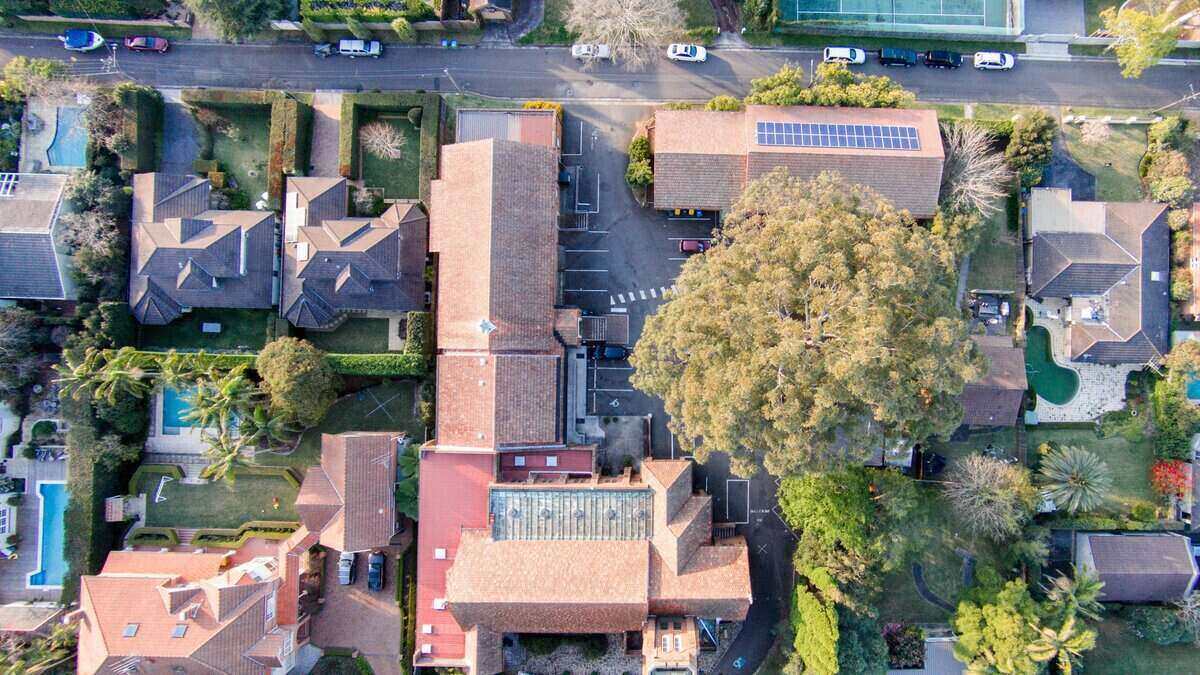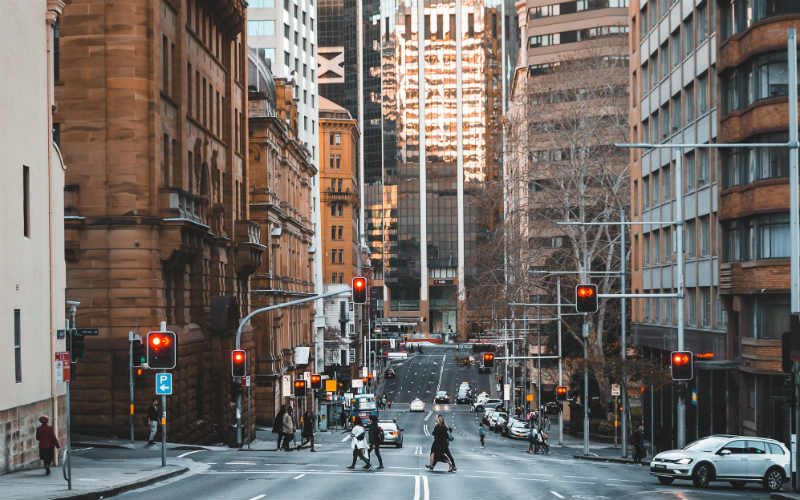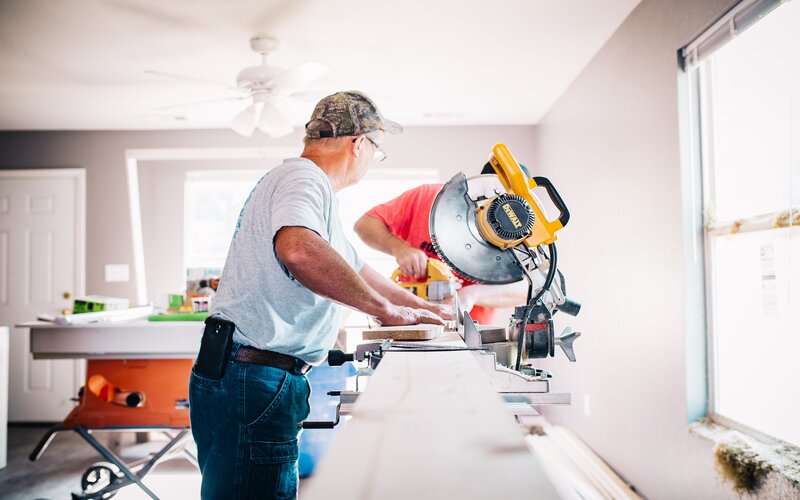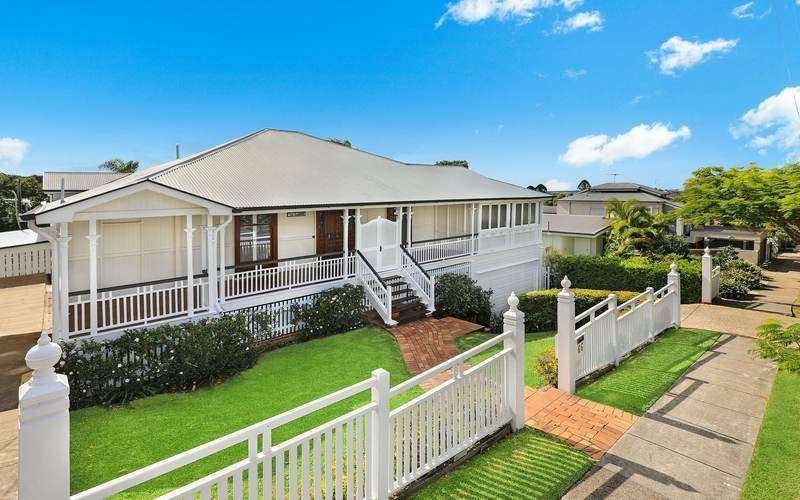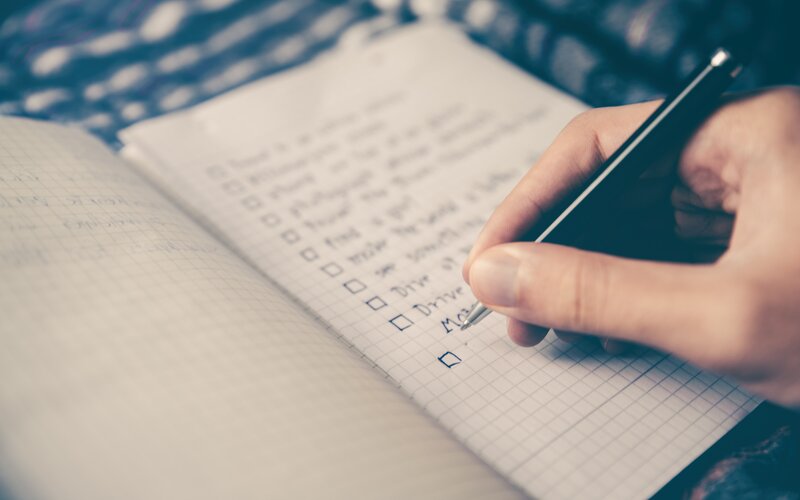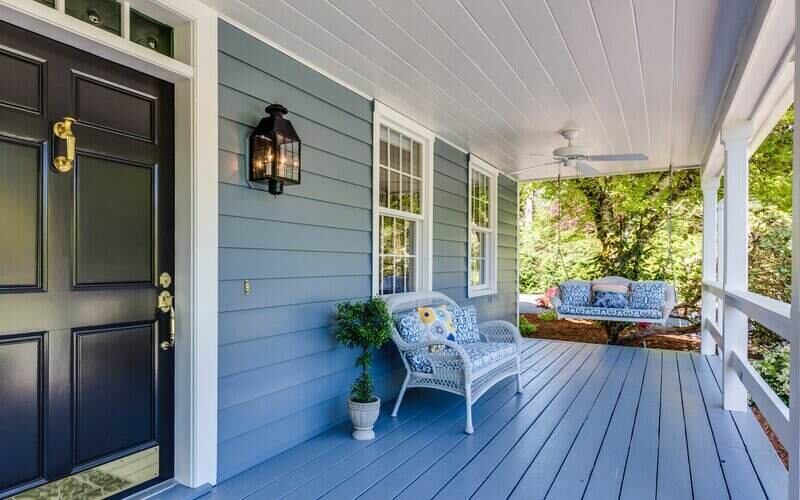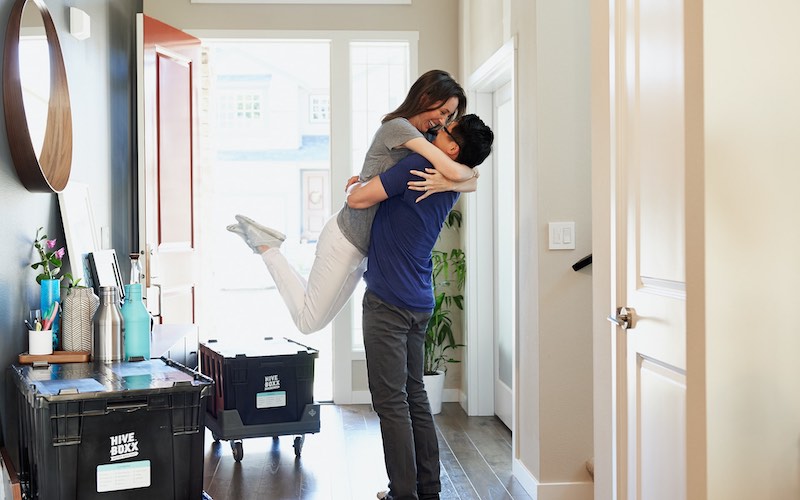The two options are commonly considered by first home buyers, upsizers, downsizers, and property investors alike. Particularly, as we’ve found ourselves within a post-pandemic housing crisis.
According to the Australian Bureau of Statistics, building approvals for private sector houses fell 15% over the 12 months to May 2023, with 8,135 having been approved that month.
Meanwhile, sluggish supply on the market has helped bolster house prices, stubborn supply chain impacts are supporting the cost of building, and interest rate hikes have deterred some from breaking ground on new dwellings.
So if you’re looking for a new home, should you build or buy? We could debate that question until the sun goes down. Instead, we’ve honed in on a few key questions: Is it typically cheaper to build or to buy, and what are the benefits and disadvantages to each?
Is it cheaper to build or buy a house?
A house will typically be the most expensive purchase a person makes in their life. And while there are many things people should consider when contemplating building a home or buying one, the biggest deciding factor will likely be cost. Let’s first look at what it costs to build a home.
It’s hard to overstate just how difficult it is to pinpoint how much it costs to build a house, as Savings.com.au has previously explored. But there are snippets of data available that, when combined, can give a vague idea of how much a home builder might expect to spend.
Cost of land
For starters, the Urban Development Institute of Australia’s (UDIA) 2023 State of the Land report, which doesn’t cover Darwin, Hobart, or regional Australia, revealed the median cost of a lot of land lifted 20% last year to $391,546.
Sydney unsurprisingly had the most expensive median lot price, followed closely by the Australian Capital Territory, while Perth had the cheapest median lot price.
|
City |
Median lot price (approximately) |
Median lot size |
Stamp duty |
|---|---|---|---|
|
Sydney |
$716,381 |
378sqm |
$26,973 |
|
Melbourne |
$382,125 |
352sqm |
$15,476 |
|
South East Queensland |
$357,717 |
421sqm |
$10,948 |
|
Adelaide |
$234,500 |
442sqm |
$8,296 |
|
Perth |
$227,750 |
375sqm |
$6,091 |
|
ACT |
$622,863 |
472sqm |
$14,263 |
|
National average |
$391,546 |
406sqm |
– |
Source: UDIA State of the Land report, 2023 & Savings.com.au’s stamp duty calculator (assuming the property is intended for primary residence and, in the case of the ACT, that purchasers received the median weekly household salary of $2364).
Those building their home won’t face stamp duty on the house itself, but they will need to pay it on the value of their land. First home buyers are typically eligible for exemptions on stamp duty, with differing legislation across the states and territories.
While it’s relatively easy to find the cost of a lot of land, the exact cost of building a home can vary massively.
Cost of building
The most recent available data from Rider Levett Bucknall outlines the cost of constructing a custom-built, single and double-storey house in the fourth quarter of 2021.
|
Region |
Low range cost per square meter |
High range cost per square meter |
|---|---|---|
|
Sydney |
$1,960 |
$5,900 |
|
Melbourne |
$1,860 |
$3,600 |
|
Brisbane |
$2,000 |
$4,500 |
|
Adelaide |
$1,580 |
$3,450 |
|
Perth |
$2,050 |
$3,800 |
|
Canberra |
$1,760 |
$3,500 |
Source: Rider Levett Bucknall’s Riders Digest 2022, Melbourne edition
It’s important to understand these figures are an extremely rough estimate and should be treated as such. They don’t take into account if the land needs to be levelled, extra costs born from delayed timeframes, or any of a plethora of factors that could see the cost of building jump or fall.
The data also comes from late 2021, when the nation was still suffering through a multitude of pandemic-related restrictions and lockdowns and inflation was around 3.5%.
Still, using our very rough estimates, we can garner an idea of how much it would cost to build a house in Australia by multiplying the low range cost of the build by the average size of new houses, before adding the median cost of a lot of land. We can then compare these total cost of building estimates to median housing values to gain a rough insight into which may be cheaper, as we’ve done in the chart below.
Compare the pair
CoreLogic figures for July 2023 reveal the median house prices in the capital cities. Comparing these with our rough and incredibly variable figures in the table below, we can see the only capital cities it appears cheaper to buy in are Perth and Canberra.
|
City |
Average size of a new build house (data as per state) |
Total build cost (low range build cost + average land cost) |
Median house value (July 2023) |
Which appears cheaper? |
|---|---|---|---|---|
|
Sydney |
239.4sqm |
$1,185,605 |
$1,333,985 |
Build |
|
Melbourne |
240.8sqm |
$830,013 |
$923,881 |
Build |
|
Brisbane |
226.1sqm |
$809,917 |
$819,832 |
Build |
|
Adelaide |
213.4sqm |
$571,672 |
$722,793 |
Build |
|
Perth |
223.4sqm |
$685,720 |
$625,969 |
Buy |
|
Canberra |
258.9sqm |
$1,078,527 |
$958,950 |
Buy |
Source: ABS Building Approvals (May 2023), Rider Levett Bucknall (Riders Digest 2022, Melbourne edition), CoreLogic (Hedonic Home Value Index, July 2023)
Figures on the cost of building in regional areas is difficult to find. As a result, it may be cheaper to buy rather than build, or vice versa, in regional areas.
While we don’t have data on the cost of building in many parts of the nation, it’s worth mentioning that the median cost of a lot of land across Australia was $391,546 in 2022 while the median size of a lot was 460 square meters. Meanwhile, the median Australian house price was $782,458 in July 2023.
Pros of building a home
There are a number of advantages to building a home compared to buying one, including:
Personalisation
Building a home from scratch typically means you’re involved in each step: finding the perfect lot of land, choosing your builder, deciding how many storeys, bedrooms, and bathrooms your house will have, and what colour the carpet will be… the choices are nearly endless. Finding an existing house that meets your every need and desire can be far more difficult.
Additionally, building means you can choose to pay for high-quality materials from the get-go, which could reduce the chances that your home will require maintenance down the line. In contrast, an established home may have maintenance issues prior to your arrival.
First home owners grants
The size and eligibility criteria of first home owner grants differ between states and territories. There is one constant, however.
Where the grants are available, they’re always available to those building a new home. Homebuilders might expect to receive at least $10,000 from their state or territory government to assist them in paying for their building.
Stamp duty
Stamp duty costs can rack up into the tens of thousands of dollars. But if you’re building a home, you only have to pay stamp duty on the value of the land you buy and not the house itself. To show how much that can make a difference, let’s take Sydney as a case study.
Buying a median lot of land in Sydney for $716,381 will likely see you paying around $26,973 of stamp duty. Comparatively, buying an established property in Sydney at the median price of $1,333,985 will cost you around $56,425 in stamp duty.
Energy efficiency
Under the National Construction Code, new houses must meet certain energy efficiency standards that existing homes may not. Not to mention, you can choose to build your house using more efficient materials, and opt for efficient lighting, heating, and cooling options.
Choosing energy efficient options when building your home can save you thousands on electricity and gas costs over the years to come. Using high-quality materials like double glazed windows and doors will block out noise and reduce heat penetration while an initial outlay on installing solar panels could help reduce your energy bills in the long run.
Cons
Alongside the positives involved with building a home over buying one, there are a number of negatives too, which include:
Time
Unless you’ve signed up to a ‘Block-esque’ show, where homes are built in mere weeks, your build will take time – and potentially lots of it. That could mean spending your hard-earned cash on both a mortgage and rent for a period of time or relying on friends or family for a cheap place to sleep.
On the other hand, those buying a home can often move in just weeks after signing the paperwork.
Construction loans
A construction loan is a specific type of home loan designed to assist the funding of a new home’s construction. Although construction loans are great for when you’re building home, when compared to normal home loans, they have notable downsides.
For instance, they typically have higher interest rates, higher fees, require a larger deposit, and don’t tend to function as a normal home loan does.
Factors out of your control
The elements are fickle and humans have no control over them. If it rains at your build site for three weeks straight, you’ll likely find your construction halted, thereby lengthening the time it takes to build your home and costing you more money. Delays could also come as a result of poor workmanship, equipment failures, labour shortages, troubles getting council approvals, or other unforeseen events – most of which are outside your control.
Outside of the CBD
This article has mainly focused on building houses on already vacant land. Chances are you won’t be able to embark on such an endeavour in the heart of a CBD or even on a city’s outskirts. Cities are typically apartment-orientated, with surrounding suburbs generally full of already existing houses. Building a property may require you to look further out into suburbia – perhaps lengthening your commute or distancing you from inner-city conveniences.
Not to mention, if you’re building a house in a new subdivision, you’ll likely want to be prepared to have ongoing construction in your vicinity for the first few years of living there as your neighbours get their own homes off the ground.
Pros of buying a home
Buying a home also has a number of advantages over building one, including:
Convenience
Finding a home to buy can be as easy as going online and scrolling through properties much like you would through your social media feed. You can even buy a property without even seeing it in person and complete the whole process online. Though, experts might advise you against doing so.
Some lenders can process loan applications in a matter of hours. That means once you sign off, you could be in a new home just weeks after finding it. Of course, things are rarely that easy. But compared to building a home, buying one is often a vastly more streamlined process.
Location
Ideally, as Australia’s population swells, so too would the number of news houses built. While that hasn’t been the case in recent years – thanks in large part to the pandemic and rising construction costs – it will hopefully be how things unfold in the future.
For those who wish to build, spots to do so are drying up fast in cities and many regional areas. Buying an established home might mean you can live in a more desirable location without being restricted by the size or type of property.
Lower financing costs
Financing the purchase of an existing home can often be far simpler than financing a new home build. While a 20% deposit is typically favoured, many lenders will allow you to borrow up to 95% of an existing property’s value (provided you pay Lenders Mortgage Insurance). On top of that, traditional home loans generally offer lower interest rates than construction loans. There’s also a greater variety of loan choices (for example, fixedor variable), as well as a larger range of lenders to choose from.
You know what you’re getting
It’s true building a home means you get to personalise much of the property, but things rarely turn out the way they’re supposed too. There are often hitches, miscommunications, and mistakes that might mean your gold plated bath turns into a copper toilet. When buying a home, you know exactly what you’re getting, especially if you have an inspector look at the place prior to purchase (a definite must).
Cons of buying a home
As good as it can be buying a home over building one, there are downsides to consider, such as:
Wear and tear
Buying an established property means someone else will have lived in it. Thus, you’ll probably find some degree of wear and tear that you’ll be bearing the brunt of. Such damage, even if its slight, will probably only become more prevalent over time, particularly with older properties. That could eventually and potentially see you footing a hefty repair bill. Older houses may also bring about higher electricity costs due to poorer insulation and fewer available energy efficient options.
Higher government fees
As seen above, stamp duty can cost you tens of thousands more when buying a home than when building one. Furthermore, if you’re a first home buyer, fewer state governments will help you with the purchase of an established home. That’s likely worth considering if you’re debating whether to build or buy your first home.
Unavailable features
Building a home means you can install all sorts of wild and interesting features. Such features – like a pool or two-car garage – won’t be available in many established properties or may be hard to find in your desired location. On the other hand, if you’re heart is set on living among period features, for example, buying an established, older home might better suit your needs.
Savings.com.au’s two cents
Chances are, even prior to reading this article, you knew whether you wanted to build or buy your home.
It’s an innately personal decision, with some people dreaming of building their perfect home their entire lives while others want a home they can move into quickly in their favorite neighborhood.
Whatever decision you make, it's important to understand the costs involved. Additionally, comparing the pros and cons might help nail down which avenue is best for you.
Finally, the monetary figures in this article should be used as an extremely rough estimate purely designed to help you grasp a vague idea of the cost of each option. Consider consulting a qualified financial adviser before making any major decisions.
Article originally published by Alex Brewster on 22 May, 2020. Updated by Brooke Cooper on 18 August 2023.
First published on May 2020
Photo by Markus Spiske on Unsplash

Ready, Set, Buy!
Learn everything you need to know about buying property – from choosing the right property and home loan, to the purchasing process, tips to save money and more!
With bonus Q&A sheet and Crossword!

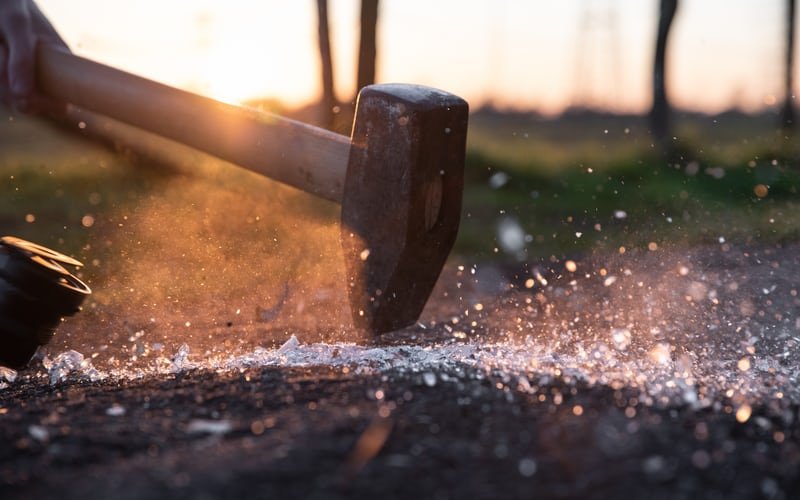
 Harrison Astbury
Harrison Astbury
 Rachel Horan
Rachel Horan


